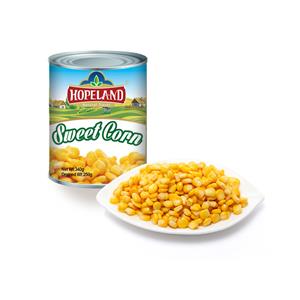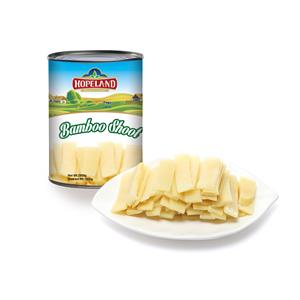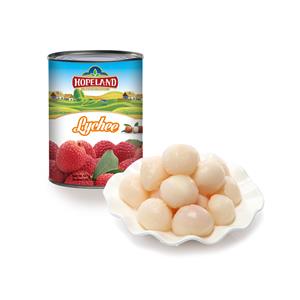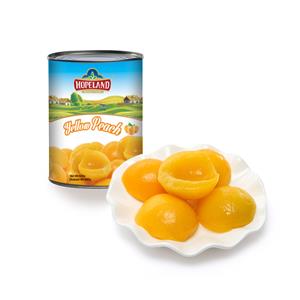Canned Tuna in Brine Water: A Staple of Convenience, Nutrition, and Culinary Versatility
Canned tuna in brine water has secured its place as one of the most popular and widely consumed seafood products across the globe. Known for its long shelf life, convenience, rich flavor, and nutritional benefits, it is a kitchen essential for households, restaurants, and even emergency supplies. Whether you are whipping up a quick salad, preparing sandwiches, or adding protein to your pasta dish, canned tuna in brine water offers a versatile and budget-friendly solution.
This article explores the origins, production process, health benefits, culinary applications, and global appeal of canned tuna in brine water. We will also discuss sustainability concerns, compare it with other canned tuna varieties, and share practical tips on incorporating it into your daily meals.

1. What Is Canned Tuna in Brine Water?
Canned tuna in brine water is tuna fish that has been cooked, preserved, and sealed in a can with water and salt. The “brine” refers to the salty water solution used in the canning process. Unlike tuna canned in oil or spring water, the brine variety is particularly popular for those who want a balance between flavor and lower fat content.
Key Ingredients: Tuna, water, salt.
Texture and Flavor: Lightly salted, moist, and firm.
Shelf Life: Typically 2–5 years if unopened and stored properly.
It is available in different cuts such as chunks, flakes, or solid fillets, and is sold in various can sizes ranging from small single-serve portions to large catering packs.
2. A Brief History of Canned Tuna
The practice of canning fish dates back to the 19th century, but tuna only gained widespread popularity in the early 20th century. Initially, sardines were the most common canned fish in Western markets, but as supplies dwindled, tuna emerged as a suitable alternative.
Early Popularity: In the United States, canned tuna started appearing in grocery stores around the 1900s. Its mild flavor made it more appealing to consumers compared to stronger-smelling fish like sardines.
Post-War Boom: After World War II, canned tuna became a household staple thanks to improved canning technology and its use in school lunches, sandwiches, and casseroles.
Global Expansion: Today, tuna is canned in large volumes in countries like Thailand, the Philippines, Indonesia, and Spain, with global exports supplying markets worldwide.
3. The Production Process
The production of canned tuna in brine involves several carefully controlled steps to ensure safety, taste, and nutritional value.
Step 1: Sourcing
Tuna is caught through various fishing methods, including purse seining, pole-and-line, and longlining. Popular species used in canning include skipjack, yellowfin, and albacore.
Step 2: Pre-Cooking
The fish are cleaned, cooked lightly in steam or boiling water, and cooled. This helps firm up the flesh and makes it easier to remove skin and bones.
Step 3: Filleting and Cutting
The meat is separated into chunks, flakes, or solid pieces. At this stage, the quality of cuts is sorted according to the final product requirements.
Step 4: Filling Cans
Tuna is placed into sterilized cans, then filled with brine solution (water and salt).
Step 5: Sealing and Sterilization
Cans are hermetically sealed and heated under high pressure to eliminate bacteria and extend shelf life.
Step 6: Labeling and Packaging
After cooling, cans are labeled, boxed, and distributed to markets worldwide.
4. Nutritional Profile
Canned tuna in brine water is considered a nutrient-rich food that provides a wide range of health benefits.
Nutritional Highlights (per 100g of drained tuna in brine):
Calories: ~120 kcal
Protein: ~25 g
Fat: ~1 g (low in fat compared to tuna in oil)
Sodium: ~300–400 mg (varies by brand)
Omega-3 fatty acids: ~200–500 mg
Vitamins: Rich in Vitamin D, B12, and niacin
Minerals: Selenium, phosphorus, magnesium
Health Benefits:
High Protein Content – Supports muscle growth, repair, and satiety.
Low in Fat – Ideal for weight management and low-fat diets.
Omega-3s – Promotes heart health, reduces inflammation, and supports brain function.
Vitamin D – Strengthens bones and immune system.
B Vitamins – Boost energy metabolism and nervous system function.
5. Culinary Uses
Canned tuna in brine is celebrated for its convenience and versatility. Its neutral yet savory flavor pairs well with countless recipes across cuisines.
Everyday Recipes:
Tuna Sandwiches: A timeless classic, mixed with mayonnaise, onions, and celery.
Tuna Salad: Combined with lettuce, tomatoes, cucumbers, olives, and a drizzle of olive oil.
Pasta Dishes: Tossed into spaghetti or penne with garlic, capers, and herbs.
Tuna Casseroles: A creamy, baked comfort food with pasta, cheese, and vegetables.
Rice Bowls: Served over warm rice with soy sauce, avocado, and sesame seeds.
Tuna Croquettes: Pan-fried patties mixed with mashed potatoes and breadcrumbs.
International Inspirations:
Japanese Onigiri: Rice balls stuffed with tuna-mayo filling.
Italian Insalata di Tonno: Fresh salad with tuna, beans, and tomatoes.
Spanish Ensaladilla Rusa: Potato salad enriched with canned tuna.
Filipino Tuna Sisig: Spicy sautéed dish made with tuna, chili, and onions.
6. Comparing Tuna in Brine vs. Oil vs. Spring Water
When shopping for canned tuna, you’ll find different liquid mediums. Each has unique characteristics:
In Brine (Water + Salt)
Lower in calories and fat.
Retains firmness and savory taste.
Slightly higher sodium content.
In Oil (Often Sunflower or Olive Oil)
Richer taste and smoother texture.
Higher calorie and fat content.
Preferred for Mediterranean dishes.
In Spring Water
Very mild flavor, lowest in sodium.
Good for health-conscious consumers.
Sometimes considered bland compared to brine.
7. Sustainability and Environmental Concerns
The popularity of canned tuna has raised concerns about overfishing and ecological impact. Consumers today are increasingly conscious of sustainability.
Overfishing: Some tuna species, such as bluefin, are severely threatened.
Bycatch Issues: Non-target species like dolphins and turtles are often caught.
Sustainable Labels: Look for certifications such as MSC (Marine Stewardship Council) or brands promoting dolphin-safe fishing.
Pole-and-Line Fishing: A traditional method that reduces bycatch and is considered eco-friendly.
By choosing responsibly sourced tuna, consumers can support marine conservation while still enjoying their favorite canned seafood.
8. Practical Tips for Using Canned Tuna in Brine
Drain Before Use – Always drain the brine to reduce sodium intake and improve flavor.
Balance Flavors – Since brine already contains salt, be mindful when adding extra seasonings.
Storage – Keep unopened cans in a cool, dry place. Once opened, transfer leftovers to a sealed container and refrigerate for up to 2 days.
Enhance Nutrition – Pair tuna with vegetables, whole grains, or legumes for a balanced meal.
Meal Prep – Use canned tuna for quick, protein-packed lunches that save time and money.
9. Why People Love Canned Tuna in Brine
Affordability – A cost-effective source of protein.
Accessibility – Available almost everywhere, from supermarkets to corner stores.
Convenience – No cooking required, ready to eat straight from the can.
Longevity – Long shelf life makes it perfect for stocking pantries and emergency kits.
Diet-Friendly – Popular among athletes, dieters, and busy families.
10. The Future of Canned Tuna
The canned tuna industry is evolving with consumer demands:
Low-Sodium Options: Brands are offering reduced-salt varieties.
Flavored Brine: Some cans now feature lemon, chili, or herb-infused water.
Eco-Friendly Packaging: More companies are shifting to recyclable and BPA-free cans.
Traceability: QR codes and blockchain technology allow buyers to trace tuna back to its source.
Conclusion
Canned tuna in brine water remains a beloved pantry staple, cherished for its affordability, convenience, and versatility. It strikes the perfect balance between taste and nutrition, offering a high-protein, low-fat option for countless dishes. From sandwiches and salads to global culinary favorites, it adapts effortlessly to any meal.
At the same time, consumers are becoming more mindful of sustainability, driving the industry toward eco-friendly and transparent practices. Whether you are a busy professional, a student, or someone seeking healthy food on a budget, canned tuna in brine water is a practical choice that deserves its place in your kitchen.
As the world continues to embrace fast yet nutritious meals, this humble product will likely remain at the heart of home cooking, travel snacks, and global cuisines for generations to come.




